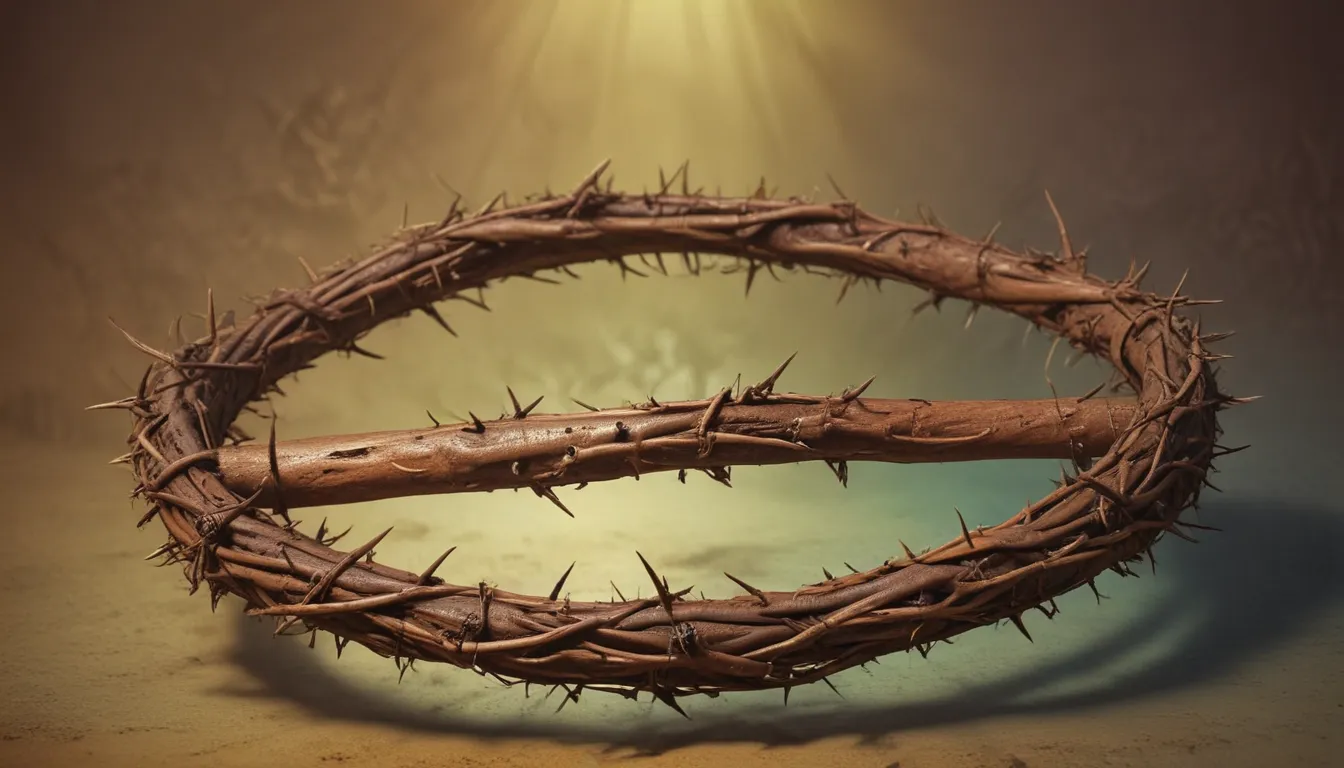
The Crown of Thorns holds a significant place in Christian symbolism and tradition, representing suffering, sacrifice, and martyrdom. In this comprehensive guide, we’ll explore the spiritual meaning behind this powerful symbol, its origins, and how it has been used throughout history to inspire faith and devotion.
I. Origins of the Crown of Thorns
The Crown of Thorns is said to have been worn by Jesus Christ during his crucifixion, as mentioned in the Bible’s New Testament (John 19:2-5). According to Christian belief, Roman soldiers wove thorny branches into a rough circle and placed it on Jesus’ head as he carried the cross to Calvary. This painful act was meant to humiliate and cause physical suffering to Jesus before his execution.
The precise origins of the Crown of Thorns remain uncertain due to historical discrepancies. Some scholars believe that the crown might be a later addition to the crucifixion narrative, while others maintain its authenticity based on ancient texts and relics. Despite these debates, the symbolic significance of the Crown of Thorns endures in Christian spirituality.
II. Spiritual Meaning and Symbolism
The Crown of Thorns carries profound spiritual meaning for Christians. Here are some key aspects to consider:
-
Suffering and Sacrifice: The crown is a symbol of Jesus’ willingness to endure physical pain and emotional suffering for the sake of humanity’s redemption. It serves as a reminder that faith often requires sacrifice and that we should be prepared to face challenges in our journey towards spiritual growth.
-
Humility and Selflessness: Wearing the Crown of Thorns, Jesus demonstrated his humble nature by willingly accepting the mockery and torment inflicted upon him. This act encourages believers to embrace humility and selflessness, putting others before themselves in their daily lives.
-
Triumph Over Evil: Despite the horrific conditions surrounding his crucifixion, Jesus’ ultimate victory over death symbolizes the triumph of good over evil. The Crown of Thorns stands as a testament to this eternal struggle between light and darkness, inspiring Christians to persevere through hardships and maintain hope in times of despair.
III. Use in Christian Art and Devotion
Throughout history, artists have depicted the Crown of Thorns in various forms of religious art, including paintings, sculptures, and stained-glass windows. These works not only serve as visual reminders of Christ’s suffering but also provide opportunities for meditation and prayer.
In addition to artistic representation, the Crown of Thorns has been venerated through relics believed to be genuine remnants from Jesus’ crucifixion. One such relic is housed in the Basilica of Saint-Sulpice in Paris, where faithful Christians come to pray and seek spiritual guidance.
IV. Feast Day of the Crown of Thorns
The Feast of the Holy Name of Jesus is celebrated on January 3rd each year, during which the Crown of Thorns is often honored with special prayers and ceremonies. This occasion reminds believers of the importance of reflecting on Christ’s name and his role as savior, while also acknowledging the significance of the Crown of Thorns in Christian spirituality.
V. Conclusion
The Crown of Thorns is an enduring symbol of sacrifice, suffering, and redemption within the Christian faith. Its powerful message encourages believers to embrace humility, selflessness, and perseverance in their spiritual journey. By understanding the historical context and spiritual meaning behind this iconic image, we can better appreciate its impact on our own lives and grow closer to God through our devotion.





